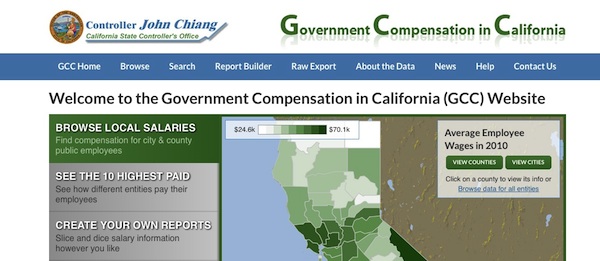Originally posted at www.foxandhoundsdaily.com
In a rather disturbing essay on the left-leaning website Slate—disturbing, at least for those of us supporting greater public sector transparency on issues ranging from budgets to transportation—government technology expert David Eaves notes that while “governments are releasing more information than ever,” these early efforts appear to demonstrate that “open data will not depoliticize debate. It will force citizens, and governments, to realize how politicized data is, and has always been.” The title of his essay updates a century-old criticism of “data”: “Lies, Damn Lies, and Open Data”.
With some fanfare, State Controller John Chiang has launched a new website intended to inform Californians about how much our public servants in state and local government are paid. In his press release, Chiang extols, “Real accountability begins with empowering the public with easy access to the budgeting and payroll decisions of our civic leaders.” Indeed.
Let’s take it for a spin, shall we?
On the positive side, the site is inviting to the layman – clean, large navigation, with several entry points through a state map, text box, or easy to understand links for cities, counties, or state data. Video tutorials can further guide a concerned citizen through the site. And the more numbers-savvy can download the original “raw” data directly to create their own reports.
There is some good and important information revealed, but there are also significant shortcomings, which will be necessary to improve upon in future revisions of the site:
- Averages vs. “Averages”: On the home page of any entity searched, the average yearly salary for municipal employees is noted prominently. This number is reached simply by dividing the “employees” by the “amount spent on total wages by this city”. Simple enough. Or is it? Taking a look at a small city like Ojai, bares some problems. While the main page logs that the average salary is $17,843, a quick scroll to the last pages of employee salaries shows why this number is so low: dozens of “Recreation Prog P-T” employees with sub-$5,000 salaries are included in the average figure.
Most curious Californians when they see an average salary number would assume that this is an average of full-time employees. Obviously, this is not the case. Mr. Chiang’s data deflates this number, while, on the other hand, inflating the total number of employees (that most people are focused on).
- Salary vs. Compensation: In a blistering City Journal essay about the new pay website, Ed Ring from the California Public Policy Center documents the variance between reported salary and total compensation, which can include line items ranging from overtime to government contributions to employee pensions. In the data from three cities that Ring reviewed (Anaheim, Costa Mesa, and San Jose), the disparity between the numbers Chiang reports and those including the full burden to taxpayers was almost double. For example Ring found that while the Controller’s site says the average salary in Costa Mesa is $71,379, he calculates that the full average compensation is closer to $146,000. Part of the problem the Controller faces is that different municipalities report their compensation in different ways, but there are some glaring omissions.
This variance between salary and total compensation – and the opacity that goes along with it – is an issue endemic to much of the public sector. In an interesting report released in September by the Center for Public Service at Portland State University, researchers found that in comparing salary with “total burden” of Oregon public sector workers it is “important to realize that for each hour an employee works the true cost is approximately twice the nominal salary rate.”
Now to be fair to the Controller, most all of us who work for someone else – in the public or private sector – carry a payroll “burden” to our employers that is greater than our salary. Our employers carry 7.5% of our Social Security contributions for example, not to mention other benefits, which vary from employer to employer. But to be fair to the “civic Californian” who is spending time looking over the data on the Controller’s site as she is hearing stories about bankrupting cities and structural state budget deficits, much of the employee data here is not getting at the deeper reasons for the fiscal crisis in our cities and the state.
The Controller says in the press release that, “Through innovation, California can strike a blow against abusive compensation practices that thrive on poor transparency,” and this is certainly true, but, as we’re all learning, “data” is not unbiased, and when it comes to public sector compensation data, the devil is in the details.
Pete Peterson is the Executive Director, Davenport Institute for Public Engagement and Civic Leadership at Pepperdine’s School of Public Policy





